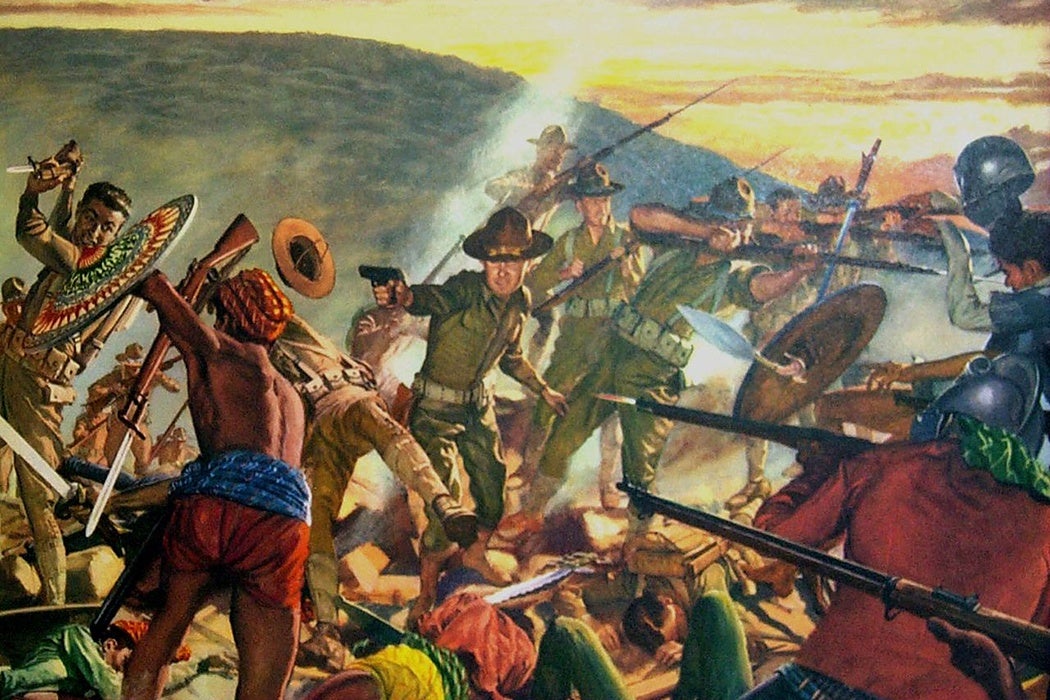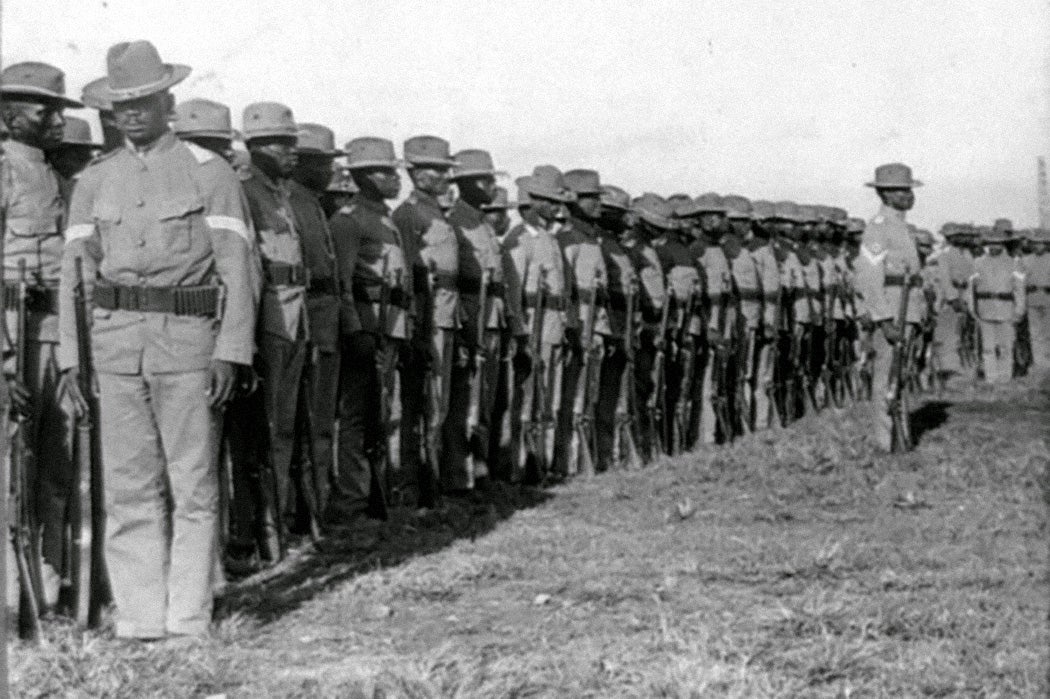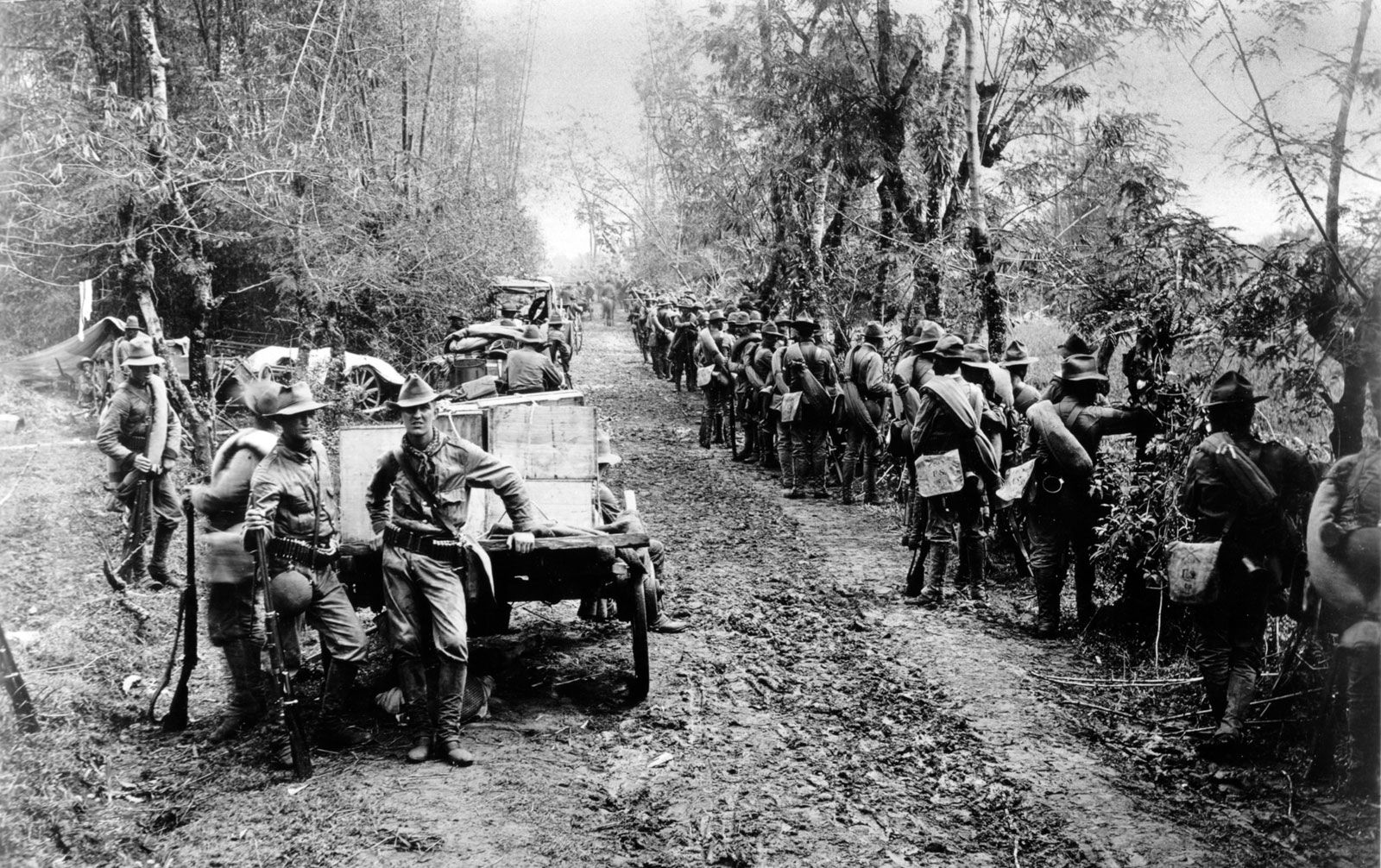The Philippine-American War stands as one of history’s most overlooked colonial conflicts, marking a pivotal moment in both American imperialism and Filipino nationalism. This devastating war, which lasted from 1899 to 1902, emerged from the complex aftermath of the Spanish-American War and Filipino aspirations for independence.

American troops during the Philippine-American War. Source: Britannica
The conflict’s roots trace back to the Philippine Revolution against Spanish rule, where writings of nationalist leaders like José Rizal inspired a movement for independence. As Spain’s colonial grip weakened, Filipino revolutionaries, led by Emilio Aguinaldo, seized the opportunity to declare independence. However, their dreams were short-lived when the United States acquired the Philippines through the Treaty of Paris in 1898.

Manila during the war period. Source: Wikimedia Commons
The transition from Spanish to American control proved tumultuous. Initial cooperation between Filipino revolutionaries and American forces quickly deteriorated as it became clear that the United States intended to establish its own colonial administration rather than support Philippine independence. This realization led to rising tensions and eventually open conflict.

U.S. Army recruitment poster for the Philippine campaign. Source: JSTOR Daily
The war itself was characterized by brutal guerrilla warfare. Filipino forces, under leaders like General Antonio Luna, adopted unconventional tactics against the superior American military might. The American response was often severe, implementing “concentration camps” and engaging in tactics that would later be questioned for their humanity.

African American soldiers during the Philippine-American War. Source: JSTOR Daily
The human cost was staggering. Conservative estimates suggest 200,000 Filipino civilians died, along with 20,000 Filipino combatants and 4,200 American soldiers. Disease, famine, and the brutal nature of the fighting contributed to the high death toll, making it one of the bloodiest colonial conflicts in modern history.
References:
Philippine-American War – Encyclopedia Britannica – link
The Ugly Origins of America’s Involvement in the Philippines – JSTOR Daily – link
Categories: American History, Asian History, Colonial History, Military History, War History
Tags: American Imperialism, colonial history, Filipino Nationalism, Military Conflict, Philippine-American War
Religion: Multiple
Country of Origin: Philippines, United States
Topic: Military History
Ethnicity: Multiple


